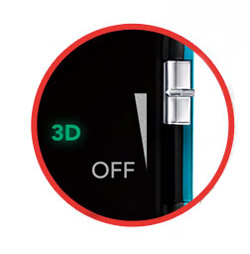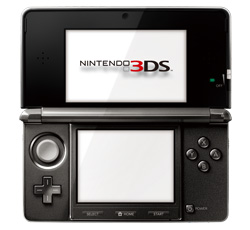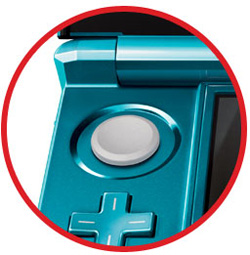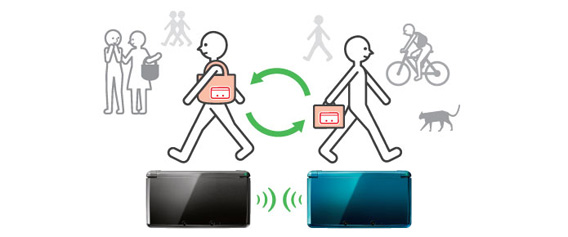

Glasses Free 3D
Nintendo’s next generation handheld has gathered plenty of attention with a top screen that enables the display of stereoscopic 3D, offering a new feeling of depth and space for games.
Positioned to the side of the screen, the 3D Depth Slider also allows players to adjust the intensity of the 3D settings, and at anytime turn off the 3D effects to play games in 2D.
But while the glasses-free 3D technology is the primary focus of this new handheld, the 3DS has much more beneath the hood.

Dual Screens
Following on the success of the DS line, the 3DS brings the familiar dual-screen design of its predecessors, now featuring a larger top screen display with 800×240 pixel resolution, which allocates 400 pixels for each eye in order to create the 3D effect. The bottom screen offers LCD touch ability at a resolution of 320×240 and both screens are capable of displaying 16.77 million colors.
Motion Sensors
The 3DS also incorporates an internal motion sensor and gyro sensor, allowing the system to react to the motion of the player as the handheld is tilted. Previously seen in select titles on other systems, the technology is now available to any game designed for the 3DS.

Analog Control
Located above the dpad controller, a new circle pad allows analog control for use in 3DS games.
3D Camera
In addition to a single inner camera facing the player, the 3DS features two outer cameras which allow users to create 3D photos.
2GB SD Memory Card Included
The 3DS is SDHC card compatible, and includes a 2GB SD Memory Card for storage of downloaded games, 3D photos, sound recordings created via the 3DS, and music in MP3 and AAC file formats.
Backwards Compatibility
Nintendo states that nearly all existing Nintendo DS and DSi games are playable on the Nintendo 3DS in 2D, but mentions that select DS games which use accessories via the Game Boy Advance slot are not compatible (because the 3DS does not have said slot).
Wireless Communication

The 3DS features two distinct forms of wireless communication.
Street Pass –
While in sleep mode, the 3DS can exchange data, such as Mii creations, scores, and additional game data with other 3DS devices users pass throughout their day. Users are able to decide what data can be exchanged and take advantage of virtual connections unknowingly going on around them in daily life.
Spot Pass –
The 3DS can also detect wireless hotspots and access points as well as using home wireless connections to obtain software and system updates, videos, and other information – even while in sleep mode.
Friends List –
Using a single friend code via the hardware, users have access to a Friend List via the Home Menu to keep track of when friends are online and what they are playing. The 3DS features an orange notification LED to notify users when friends come online and users can set whether they appear visible to friends and whether the games they play appear visible. Through the Friends List users can exchange messages and the 3DS can also receive messages while in sleep mode, notifying users by lighting the notification LED green as well as placing an icon in the Home Menu.